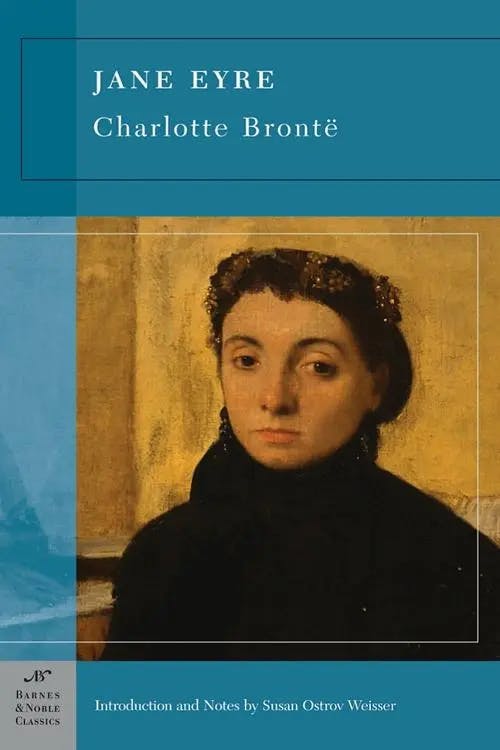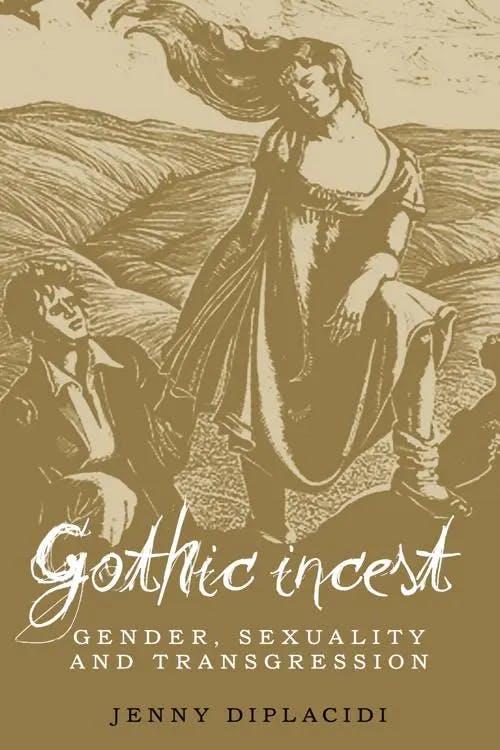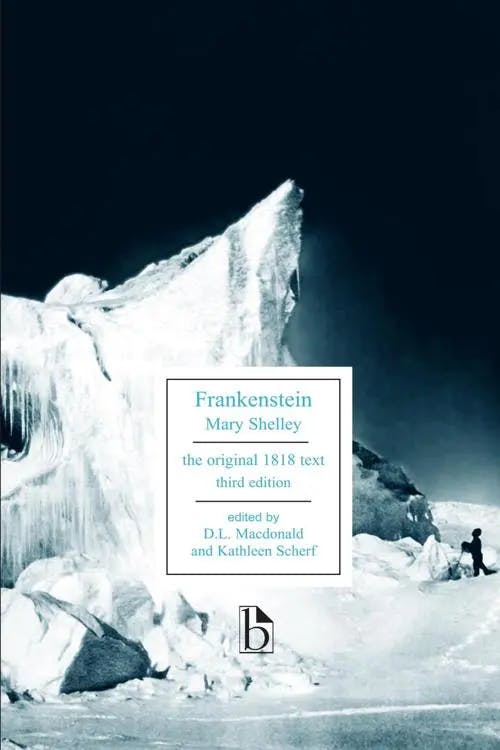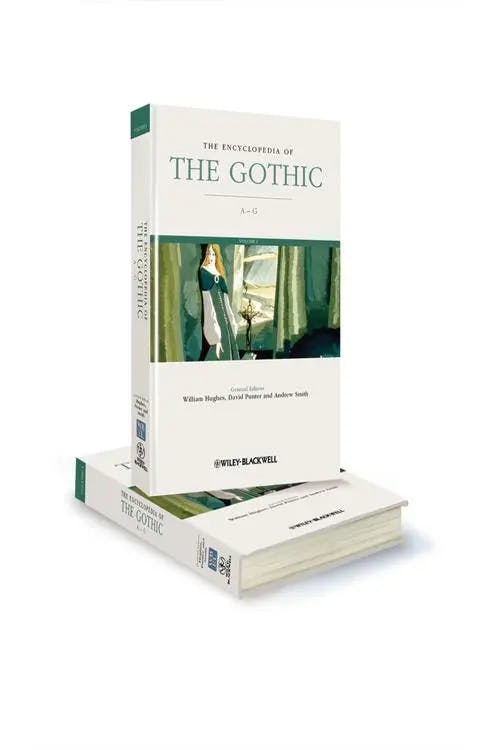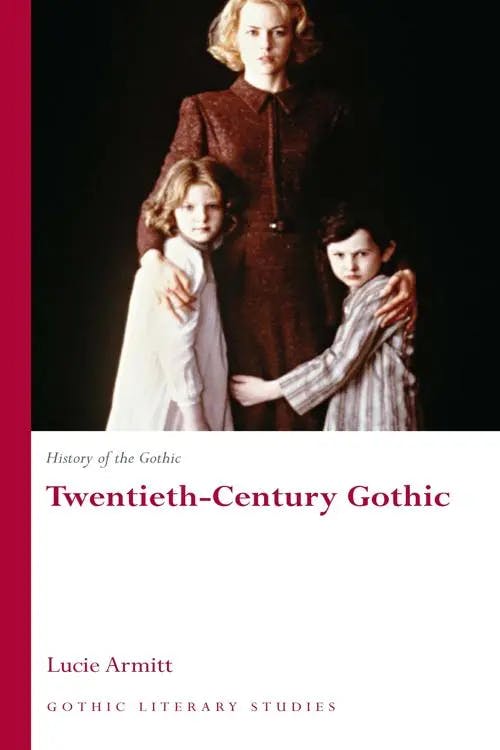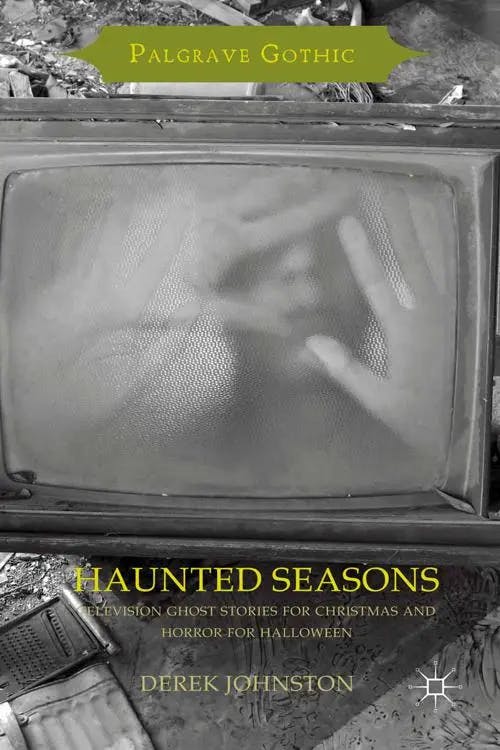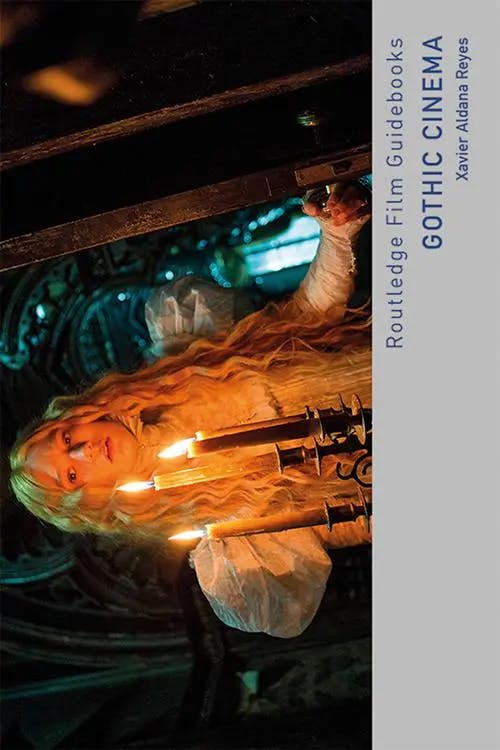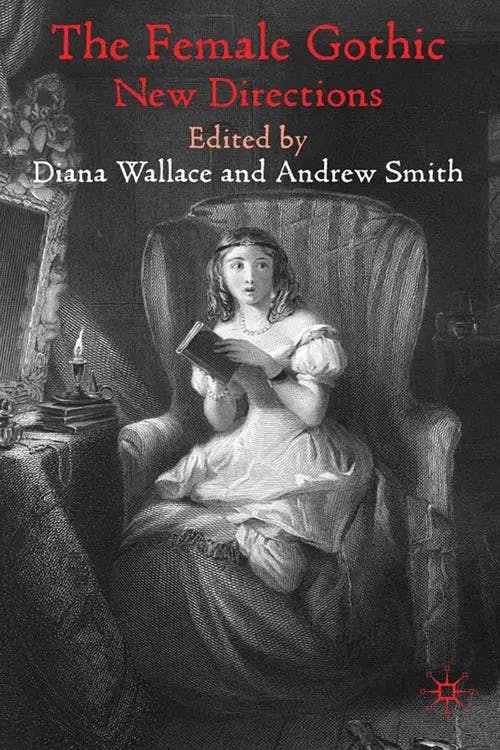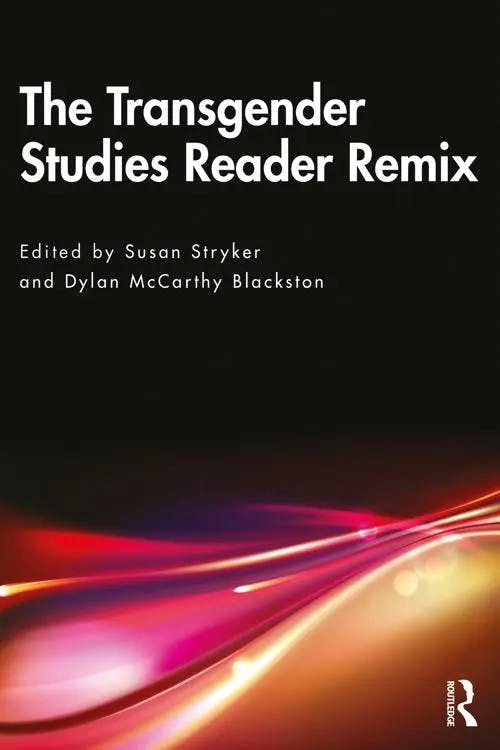Key Elements of Gothic Literature & Film
MSt, Women's, Gender & Sexuality Studies (University of Oxford)
Date Published: 07.03.2023,
Last Updated: 19.07.2024
Share this article
History of the Gothic
As Nick Groom notes in The Gothic: A Very Short Introduction, “Type ‘Gothic’ into Google and you get over 250 million hits: images of ecclesiastical architecture, websites devoted to ‘bone-chilling’ literature, and opportunities to purchase alternative footwear….Trying to identify the original ‘Goths’, meanwhile, can lead either to an ancient barbarian race or to a rock music subculture of the 1980s” (2012). All these things are, in fact, gothic, a term with a varied yet related collection of meanings.
“Gothic” originally referenced tribes (Visigoths in the west, Ostrogoths in the east) most famous for invading Rome. The rise of the Goths is often considered the beginning of the “Dark Ages,” a misleading term for the period between the “fall” of the Roman Empire and the Renaissance. Stereotyped as a time of intellectual decline, the reality of the early Middle Ages was more complex. In fact, the Visigoths developed a code of law with comparatively progressive attitudes toward the rights of women and the practice of religion.
As Christianity spread across medieval Europe, cathedrals appeared across the continent in a style that sought to capture the magnificence of God for an illiterate public. This ornate, dramatic, and asymmetrical style of art and architecture, seen in the famous Notre Dame de Paris, was distinct from the symmetrical, ordered classical style exemplified by the Roman Pantheon. As the Renaissance aimed to revive classical ideals, Gothic acquired a new meaning: Giorgio Vasari deemed medieval architecture “Gothic,” meaning to debase the style as un-Roman and un-Enlightened. The name stuck, without its necessarily pejorative connotation.
In The Gothic Cathedral, Otto Georg Von Simson writes that the defining features of Gothic architecture are not its feats of engineering — vaulted ceilings, pointed arches, flying buttresses — or its soaring height, but its “two aspects…without precedent and parallel: the use of light and the unique relationship between structure and appearance” (2020, [1989]). Through light and space, architects aimed, Von Simpson argues, to reflect God in stone:
The cathedral was the house of God, this term understood not as a pale commonplace but as fearful reality. The Middle Ages lived in the presence of the supernatural, which impressed itself upon every aspect of human life. The sanctuary was the threshold to heaven. (1989, [2020])
Otto Georg Von Simson
The cathedral was the house of God, this term understood not as a pale commonplace but as fearful reality. The Middle Ages lived in the presence of the supernatural, which impressed itself upon every aspect of human life. The sanctuary was the threshold to heaven. (1989, [2020])
Yet, there was a dark side to Gothic architecture in its shadowy corridors, depictions of hellish torment, and monstrous gargoyles leering overhead. The violence of the Reformation added another layer of less-than-heavenly associations with Gothic architecture: iconoclasts left Europe’s religious structures in ruins and the remains of Gothic architecture haunted.
In the 17th- and early 18th-centuries Gothicism was again transformed: the Goths were reimagined as forerunners to modern society, early Christians who stood against the excesses of paganism and provided an example for curtailing absolutist monarchies. Gothic ruins became popular sites to visit for poetic inspiration or historical reflection. Cultural fascination with medieval customs and architecture helped spark the Gothic literary tradition that emerged in the 1760s.
Key elements of the Gothic
A naïve young woman finds herself in a vast and mysterious house, filled with unsavory secrets. A guilt-ridden monk is tormented by visions of past wrongs — are they dreams or spectres? A scientist labors in a candlelit laboratory as rain pounds against the window. These are recognizably gothic scenes. But what makes them so?
The Gothic is, in many ways, a formula, a collection of plot devices, character types, and other tropes that can be rearranged and subverted to tell a story — and incorporated into works of any genre.
Let's take a look at some key gothic elements and tropes.
Spooky (and sublime) settings
Since Horace Walpole’s The Castle of Otranto (1764), authors have loved setting gothic stories in scary structures — castles, monasteries, cathedrals, and houses. Gothic spaces are often labyrinthine or difficult to navigate, containing secret passageways, shadowy corners, crumbling walls, forbidden rooms, and dramatic architectural features (staircases, towers, dungeons, crypts). Glance through the horror movies released in any given year, and you’ll soon notice that many stage their terrors in a single prominent location — whether that structure is haunted by undead presences (The Amityville Horror), terrorized by man-made horrors (Psycho, Get Out), or home to both (The Shining).
The Gothic also frequents settings which are sublime. Edmund Burke uses sublime to describe intense feelings of pain and danger which can be pleasurable to us “at certain distances, and with certain modifications.” Sublime landscapes often force us to confront our smallness in the face of nature — high mountains, frozen tundras, deep oceans.
Bad Weather
“It was a dark and stormy night….” Or, as Mary Shelley writes in Frankenstein (1818), “It was on a dreary night of November, that I beheld the accomplishment of my toils.” The mood of the Gothic translates into its literal gloomy atmosphere, rife with rain, lightning, mist, wind, and fog. The cold, damp, and dark obscure the sun during the day, while pale moonlight lights the gothic night.
Take this passage from Jane Eyre (1847), when Jane is wandering alone after leaving Mr. Rochester,
I lay still a while: the night-wind swept over the hill and over me, and died moaning in the distance; the rain fell fast, wetting me afresh to the skin. Could I but have stiffened to the still frost — the friendly numbness of death — it might have pelted on: I should not have felt it; but my yet living flesh shuddered to its chilling influence.
Charlotte Bronte
I lay still a while: the night-wind swept over the hill and over me, and died moaning in the distance; the rain fell fast, wetting me afresh to the skin. Could I but have stiffened to the still frost — the friendly numbness of death — it might have pelted on: I should not have felt it; but my yet living flesh shuddered to its chilling influence.
Here, the weather both reflects and creates the genre’s characteristic melancholy.
Monstrous Creatures
Gothic literature has spawned all sorts of nightmarish beings — vampires, werewolves, zombies, demons. These monsters come from nature (Godzilla), from the past (Dracula), from our own creation (Frankenstein’s creature), or from within (Dr. Jekyll’s evil counterpart, Mr. Hyde). Monsters are transgressors, refusing to play by the rules as they prey upon our fears and our desires. (See our study guide on monster theory for more.)
Some works of Gothic literature feature a literal monster, while others depict humans who behave monstrously, including sadists, serial killers, and sexual predators. Gothic monsters help us interrogate the boundaries between human and nonhuman, acceptability and depravity, goodness, and evil.
The Undead
Things just don’t seem to stay dead in the Gothic. Ghosts haunt the genre, terrifying characters, possessing them, or warning them of danger. The genre explores the boundary between life and death through beings that transcend them, and ghosts also allow the Gothic to emphasize that particular feeling that won’t let the past rest: guilt.
The past always seems to return in the Gothic; wrongs demand to be righted, unsated figures seek revenge, and traumatic events resurface. These ghosts may not be literal, but they are felt: for example, in Daphne Du Maurier’s Gothic romance, Rebecca (1938), the protagonist is tormented by comparisons between her and her husband’s late wife, Rebecca. The narrator feels Rebecca’s presence throughout the house and must deal with the consequences of her (and her husband’s) past actions. Even objects in the Gothic seem to have lives of their own; doors mysteriously slam shut and portraits watch from the walls.
Cursed, or complicated, families
Strange families are common in Gothic literature. Characters are haunted by the loss of significant family members or by wrongdoings which continue to curse the family line. Complex family trees allow for reveals of unknown relatives and inheritances. The Gothic wonders how much your family dictates who you are and how difficult it is to break from familial expectations.
Incest is also a common gothic trope. In Gothic Incest: Gender, Sexuality and Trangression, Jenny DiPlacidi argues that,
representations of incest are revealed as synonymous with the Gothic as a whole: complex, multifaceted and consciously resistant to the dominant social and sexual hegemonies in their models of alternative agencies, sexualities, forms of desire and family structures. (2018)
Jenny DiPlacidi
representations of incest are revealed as synonymous with the Gothic as a whole: complex, multifaceted and consciously resistant to the dominant social and sexual hegemonies in their models of alternative agencies, sexualities, forms of desire and family structures. (2018)
Distressed Damsels
The Gothic loves damsels in distress: women in danger, pursued or held captive by monsters and monstrous men who threaten them with physical violence and sexual transgression. These gothic heroines — beautiful, waifish, fragile — swoon and shriek in terror.
Henry Fusili’s painting The Nightmare captures the dramatic distress of the gothic heroine. A beautiful woman lies with a demon crouched on her torso. Her white dress hugs her body, and her long neck invites a kiss or a monster’s bite. The painting’s combination of horrific and seductive elements exemplifies the impulse to see beauty alongside and within pain, fear, and death.
While gothic heroines may seem helpless and naïve, they often need to be clever and resourceful in order to save themselves. In Dracula (1897), Mina Harker is not just the vampire’s victim; she plays an integral role in defeating him, drawing upon her knowledge of the train tables and battling Dracula alongside the men.
Tortured men
Male gothic protagonists are conflicted, solitary, tortured, brooding, and secretive. The “Byronic hero” — modeled after famous poet and infamous womanizer Lord Byron — rides the line between hero and villain, sometimes a darkly seductive charmer, sometimes a cold and sullen loner. The mercurial Mr. Rochester manipulates Jane even as he is tormented by his secret past; the melancholy Victor Frankenstein alternates between self-aggrandizing and self-loathing, racked with guilt from his actions and inaction.
Another version of this tortured type is the sympathetic monster — Frankenstein’s creature, the Phantom of the Opera, Edward Scissorhands. Rather than clinging to power while brooding on their bad actions, these figures are usually disempowered and tortured by their own existence more than anything they’ve done.
Suspense and melodrama
The heroine slowly walks down the hallway. Tense string music plays in the background, and she tightens her grip on the weapon in her hand as she moves in and out of shadow. The music swells, and you hold your breath as you wait for something to happen.
This feeling of tension and suspense is core to the gothic aesthetic. The genre plays with psychological intensity and anticipation as much as it releases into outbursts of violence.
The Gothic also embraces melodrama. Dramatic events occur and characters respond in kind — women swoon, men rage and lash out. Inner torment is expressed in displays of “madness,” and characters become physically ill as a result of moral failure, psychological distress, or bad weather.
Doubles and Doppelgangers
Doubling is another common trope in the Gothic. Some stories, like Edgar Allan Poe’s “William Wilson” (1839), feature doppelgangers, people who look exactly alike. But gothic doubles can take other forms too — twins, reflections, separate characters who begin to merge into one. In Carmilla (1847), Laura and Carmilla grow more alike and codependent: “you and I are one for ever,” Carmilla declares.
In The Picture of Dorian Gray (1890), Dorian’s double is his decaying portrait which allows him to remain forever young. This doubling, as with Jekyll and Hyde, allows for an examination of the duplicity of man and the difference between appearances and true nature.
Dreams and Nightmares
In her introduction to the 1831 edition of Frankenstein, Mary Shelley writes about her inspiration for the novel,
When I placed my head on my pillow, I did not sleep, nor could I be said to think. My imagination, unbidden, possessed and guided me, gifting the successive images that arose in my mind with a vividness far beyond the usual bounds of reverie. I saw—with shut eyes, but acute mental vision,—I saw the pale student of unhallowed arts kneeling beside the thing he had put together. (1831)
Mary Shelley
When I placed my head on my pillow, I did not sleep, nor could I be said to think. My imagination, unbidden, possessed and guided me, gifting the successive images that arose in my mind with a vividness far beyond the usual bounds of reverie. I saw—with shut eyes, but acute mental vision,—I saw the pale student of unhallowed arts kneeling beside the thing he had put together. (1831)
The book came to Shelley in a dream, fitting for a story which features powerful dreams of its own. Sleep is often disrupted in Gothic texts by visions and nightmares which reveal desires, fears, or dangers.
Key themes in Gothic literature
The Gothic is more than the sum of its parts: it is invested in particular themes which can be adapted to different times, locations, and political agendas. Broadly, the Gothic depicts transgressions, both of behavioral norms (sexual deviance, gender subversion, moral wrongdoings) and of seemingly fixed boundaries (self and other, life and death, past and present, man and monster). Dwelling often in the spaces between these categories, the Gothic often aims to evoke an ambivalent feeling of pleasure and pain, attraction and repulsion. Fear, the popularity of the Gothic seems to say, can feel pretty good.
Theoretical concepts often helpful for analyzing Gothic texts include the unheimlich/uncanny (Freud), the abject (Kristeva), the grotesque, the liminal, the monstrous, the sublime (Burke), the fantastic (Todorov; Rabkin), the weird (Fisher), and the eerie (Fisher).
The Gothic novel pushes back against the Enlightenment’s view of the world as rational, disenchanted, and comprehensible through human experimentation and exploration. As William Hughes, David Punter, and Andrew Smith write in The Encyclopedia of the Gothic,
The Gothic pursues a seemingly messier version of what it means to be a person than that articulated in early natural philosophies and suggests that the world is a more complex place than Enlightenment science would have us believe. However, this is, of course, a simplification. The Gothic represents an attempt not to destroy coherence but to provide an alternative context within which meaning is discussed. The Gothic is thus founded on a model idea of debate and interrogation and functions as a form of radical skepticism that, paradoxically, seems to echo the Enlightenment emphasis on interrogation and testing as a way of getting at some semblance of the truth.
David Punter, William Hughes, Andrew Smith
The Gothic pursues a seemingly messier version of what it means to be a person than that articulated in early natural philosophies and suggests that the world is a more complex place than Enlightenment science would have us believe. However, this is, of course, a simplification. The Gothic represents an attempt not to destroy coherence but to provide an alternative context within which meaning is discussed. The Gothic is thus founded on a model idea of debate and interrogation and functions as a form of radical skepticism that, paradoxically, seems to echo the Enlightenment emphasis on interrogation and testing as a way of getting at some semblance of the truth.
Some of the earliest criticism on gothic aesthetics was produced by the prolific Gothic novelist Ann Radcliffe. Building on Edmund Burke’s work, Radcliffe defined “terror” and “horror,” drawing a distinction between them — and the two emerging strains of Gothic novel. In the posthumously published essay “On the Supernatural in Poetry” (1826), she writes that terror and horror are “so far opposite, that the first expands the soul, and awakens the faculties to a high degree of life; the other contracts, freezes, and nearly annihilates them” (1826).
Radcliffe champions terror, arguing that terror relies on an obscured or anticipated fear, something felt rather than faced, whereas horror results from the shock and awe of confronting something ghastly. Terror is evoked when the image is “not distinctly pictured forth, but is seen in glimpses through obscuring shades, the great outlines only appearing, which excite the imagination to complete the rest…. Obscurity leaves something for the imagination to exaggerate” (1826). This distinction between terror and horror remains a method for analyzing the Gothic and continues to be reinterpreted by scholars. (See Locating Ann Radcliffe for more on Radcliffe’s writing and aesthetics.)
The development of the Gothic novel
Horace Walpole’s The Castle of Otranto (1764) is traditionally considered the first Gothic novel, in part because Walpole added the subtitle “A Gothic Story” to its second edition. Originally presented as a translation of a lost 16th-century manuscript, the novel takes place in a medieval Italian castle, reflecting the period’s fascination with a mysterious and romanticized gothic past. Otranto established many elements that became characteristic of the Gothic: elaborate and eerie architecture, a gloomy atmosphere, a vengeful past, seemingly supernatural events, religious imagery, disguised identities, and — of course — the dead and undead. As Annie Pécastaings writes in her introduction to Otranto, “The character types who inhabit Otranto’s landscape have become staples of the Gothic novel: Isabella (Frederic’s daughter) is the novel’s maiden in distress, Manfred its lustful villain, and Father Jerome its mysterious holy monk” (2009).
In the decades following the publication of Otranto, the Gothic novel flourished in books like William Beckford’s licentious, Orientalist tale, Vathek (1786); Matthew Lewis’ moralist romance The Monk (1796); Ann Radcliffe’s popular, pioneering novels including The Mysteries of Udolpho (1794) and The Italian (1797); and Mary Shelley’s masterpiece and progenitor of science fiction, Frankenstein (1818).
By 1803, the Gothic novel had become so popular and recognizable that Jane Austen completed wrote a parody of the genre, Northanger Abbey (although the novel was not published until 1817). Charles Maturin’s meandering Melmouth, The Wander (1820) was once considered the bookend to the period of the proper Gothic novel, but this strict periodization quickly falls apart. Emily Brontë’s Wuthering Heights (1847) and her sister Charlotte’s Jane Eyre (1847) contain many gothic elements, and some of the Gothic’s most famous creations arise much later in the century— J. Sheridan Le Fanu’s Carmilla (1872), Robert Louis Stevenson’s Strange Case of Dr. Jekyll and Mr. Hyde (1886), Oscar Wilde’s The Picture of Dorian Gray (1890), and Bram Stoker’s Dracula (1897). While these later works were once considered revivals of an earlier mode or simply not Gothic, Gothic criticism now tracks a longer tradition across several cross-pollinating periods of development.
In the Victorian era, Gothic subgenres like the detective story, ghost story, and adventure story took shape, along with urban Gothic stories of London and the “suburban Gothic” of sensation fiction. Jarlath Killeen writes in History of the Gothic: Gothic Literature 1825–1914:
Just as the development of urban Gothic shows how modernity is considered to produce horrors of its own not reducible to the anachronistic or to history, so the suburban thrills of Sensation Fiction demonstrate categorically that, far from bringing enlightenment, modernity produces monsters. (2009)
Jarlath Killeen
Just as the development of urban Gothic shows how modernity is considered to produce horrors of its own not reducible to the anachronistic or to history, so the suburban thrills of Sensation Fiction demonstrate categorically that, far from bringing enlightenment, modernity produces monsters. (2009)
Toward the fin de siècle and early twentieth century, the Gothic became a useful mode for addressing fears arising from a modernizing, secularizing, overextended British empire. (See our study guide on the fin de siècle for more on this period.)
The twentieth century provided plenty of new fears for the Gothic to tap into. In History of the Gothic: Twentieth-Century Gothic, Lucie Armitt writes that the “real-life horror of two world wars takes over from the imagined horrors of the supernatural and/or superstition” (2011). Threats of nuclear war, serial killers, and the HIV/AIDS epidemic sparked their own gothic interpretations, and the haunted house, an element of the Gothic since Walpole’s castle, rose to particular prominence, whether representing the destruction of war in Europe or American suburbia. Armitt argues that the twentieth century oriented the Gothic toward “threats we believe face our children,” evidenced by “the monster narratives the media constructs around ‘the paedophile’, ‘the child abductor’, ‘the child murderer’, ‘the child abuser’” (2011).
The development of cinema brought Gothic to the silver screen; the 1930s and 1940s created a group of classic monsters — Boris Karloff as the creature in Frankenstein (1931), Bela Lugosi as the titular Dracula (1931), Henry Hull as a Werewolf of London (1935) — and, over the course of the century, Alfred Hitchock pioneered the visual Gothic. The 1960s through 1980s welcomed a proliferation of horror films and franchises, while more recently the Gothic has been shaped by the paranormal romance craze from Ann Rice to Stephanie Meyer.
As the Gothic expands, so does its definition and the scholarship around it. Armitt writes:
Unlike the origins of Gothic, which clustered around a specific, but small, group of writers, thinkers and painters…, twentieth-century reignition of interest in the contemporary Gothic has us reeling in terms of how best to tame this amorphous and ever-expanding ‘monster’. (2011)
Lucie Armitt
Unlike the origins of Gothic, which clustered around a specific, but small, group of writers, thinkers and painters…, twentieth-century reignition of interest in the contemporary Gothic has us reeling in terms of how best to tame this amorphous and ever-expanding ‘monster’. (2011)
The Gothic tradition is still alive and well, and it reaches far beyond the traditional novel, if it was ever confined there in the first place. Samuel Coleridge’s poem “Christabel” (1816), Richard Brinsley Peake’s play Presumption; or, the Fate of Frankenstein (1823), and Edgar Allan Poe’s poetry and short stories infuse non-novelistic forms with gothic tropes and themes. Today, the Gothic can be found in video games and tv shows, music and graphic novels. In addition to growing literature on Gothic subgenres — Rural Gothic, New Urban Gothic, Postfeminist Gothic — there is increasing scholarship on regional Gothic traditions across the globe — Nordic Gothic, Irish Gothic, Australian Gothic, South Asian Gothic, South African Gothic. While the Gothic relies on recognizable conventions, it endlessly adapts to new locations, mediums, and monsters.
Gothic and/as horror
Like “Gothic,” “horror” as a genre signifier is difficult to define. While “horror” may at first bring to mind popular film franchises like Halloween and Scream, Darryl Jones points out that horror is not necessarily modern or low brow (2021). He argues that tragedy is highbrow horror; images from Sophocles and Euripides (Oedipus gouging out his own eyes, Pentheus’ mother tearing her son apart, Medea murdering her children) would be right at home in the latest splatter film.
While horror and the Gothic are certainly related — today’s horror literature can be traced back to the Gothic novel — the exact relationship between Gothic and horror as genres is contested. Jones files horror under the umbrella of the Gothic; whereas other kinds of Gothic texts can prioritize “terror” (as Radcliffe defined it), fears that remain obscured, imagined, or psychological, “horror” is a specific mode of the Gothic invested in, well, horror — in bodily/corporeal fear and revulsion.
In Haunted Seasons, Derek Johnston takes the inverse approach, seeing the Gothic as a subgenre of horror — though defining these terms is especially difficult given that the label “Gothic” is so often applied by scholars after the fact rather than arising in original discourses around the texts. Johnston writes,
As a genre, horror is one that is regularly left undefined, presumably with the assumption that people know it when they see it…. The Gothic, on the other hand, is subject to many definitions, even when simply considering literary and media Gothic rather than, say, the architectural, the musical, or the subcultural. (2015)
Derek Johnston
As a genre, horror is one that is regularly left undefined, presumably with the assumption that people know it when they see it…. The Gothic, on the other hand, is subject to many definitions, even when simply considering literary and media Gothic rather than, say, the architectural, the musical, or the subcultural. (2015)
In film criticism, the distinction between terror and horror can be helpful for categorizing films as Gothic or horror, categories that may borrow from each other but are ultimately separate — the subtle and suggestive Gothic hinting at partially visible terrors, dwelling in shadows, psychological manifestations, and hauntings. Horror, on the other hand, is often seen as heavily graphic and explicit, employing (often gratuitous) gore and violence.
As helpful as this division can be, Xavier Aldana Reyes writes in Gothic Cinema that “the alignment of the cinematic Gothic with the horrifically acceptable or less extreme runs the risk of stigmatising more transgressive films and of denying horror (as it is understood in this taxonomy) its own potential value as more than a collection of gruesome moments” (2019). Moreover, not all non-visceral horror films are Gothic: Reyes cites Alien (1979), which “does not rely on particularly visceral numbers to generate its scares and its monster stays out of focus for most of the film” but can be “described as science fiction horror” or else risk stretching the Gothic until it loses meaning (2019). Conversely, horror has no monopoly on blood, sex, and violence; the Gothic, too, can be graphic.
The case study below details how the Gothic and horror operate alongside one another in cinema, combining “terror” and “horror” to craft a thrilling film.
Gothic cinema example: Crimson Peak
Guillermo del Toro’s 2015 film Crimson Peak engages with the Gothic tradition, both celebrating and subverting the genre while incorporating elements of horror. The film is self-aware in its deployment of gothic tropes; its title card is the cover of a book, which opens to let the viewer inside, intentionally locating the film as part of a literary lineage.
Crimson Peak follows the American heiress Edith Cushing (Mia Wasikowska) as she marries the mysterious English baronet Thomas Sharpe (Tom Hiddleston) and moves to his English estate, Allerdale Hall — nicknamed “Crimson Peak” because of the warm red clay which seeps up through the snow in winter.
The film borrows its core elements from the Gothic romance (think Rebecca [1938] and its predecessor, Jane Eyre [1847]) — a young woman suddenly attached to a man she doesn’t really know, a gloomy manor house with forbidden rooms, a cold and hostile housekeeper the haunting presence (literal or metaphorical) of a past wife (or wives), an investigation into the man’s secrets. Crimson Peak mirrors themes of early Gothic novels by featuring familial strife, sexual transgression (including incest), and a young woman preyed upon for her money; it also draws upon the Victorian Gothic, incorporating a detective story and modernizing technology (Thomas’s clay mining machine, wax phonographic cylinders, glass plate photography).
The gothic decadence of Crimson Peak — the heroine walking slowly through the halls of a crumbling mansion with a candelabra in hand, her white nightgown trailing behind her and a ghostly portent ringing in her ears — is punctuated by bloody moments of horror.
The above scene begins firmly in the realm of the Gothic: Edith dreams of wandering sparse moorland , and a ghostly figure points in the direction she should go. Edith awakens and coughs, leaving a red stain on her white pillowcase and pale fingertips (the contrast of colors is a gothic element particularly well-suited to film). Standing as she senses an otherworldly presence, she raises the candelabra to light the dim room and extends her hand, inviting the ghost to touch her. A shadow moves across the background, momentary and incorporeal. Her breath comes heavy and her eyes dart around as the scene builds its tension. Suddenly, Edith’s hand is pulled to the floor by an unseen force, and someone screams in the bathroom. The threats are sensed but still not clearly seen. Edith’s face is cast in shadow and her body is framed by the crack in the door as we watch her slowly move through it and into the bathroom. There, she finds a ghost resting in the bathtub, a meat cleaver lodged in its skull. This image is one of horror: the massive weapon, the deformed body, the bloody red. Edith runs into the hallway and encounters another horrifying specter, the floor below it wet and shining with blood, its bones crunching as it lurches toward her.
Crimson Peak employs elements of the Gothic and horror to craft a film both suspenseful and visceral. Xavier Aldana Reyes notes that,
one of Crimson Peak’s distinguishing features is its clay-red ghosts, halfway between the ethereal and the gory, and the aggressive nature of scenes like the face-stabbing of Thomas. (2019)
Xavier Aldana Reyes
one of Crimson Peak’s distinguishing features is its clay-red ghosts, halfway between the ethereal and the gory, and the aggressive nature of scenes like the face-stabbing of Thomas. (2019)
Its particularly violent ending delivers the viscerality of horror within the Gothic aesthetic, the white snow stained red with clay and blood. The film plays with shadow, color, and framing, honoring a history of Gothic aesthetics on screen whilst taking them in new directions. Through Crimson Peak, we see how the Gothic and horror are intertwined and how tropes of both can be continuously combined, reorganized, and subverted to tell compelling and frightening stories on page and screen alike.
‘Male’ and ‘female’ Gothic
One method of analyzing and categorizing Gothic literature is by separating it into two traditions, “male” and “female” Gothic, often represented by the respective writings of Matthew Lewis and Ann Radcliffe. This division in part aligns with the distinction Radcliffe offered between horror and terror — the male Gothic tending toward shocking sights, the female Gothic preferring obscured or anticipated fears.
The distinction between male and female Gothic is also a difference in perspective: the male Gothic inhabits the psychology of the villain, or at least a flawed and tortured leading figure, while the female Gothic (first coined by Ellen Moers) focuses its lens on the persecuted protagonist — often a young woman — and the domestic space she risks entrapment within.
As Carol Davison writes in History of the Gothic: Gothic Literature 1764–1824, the male Gothic subverted Enlightenment ideals and patriarchal institutions through scenes of horrific depravity and interruptions of the supernatural, while the female Gothic “often rendered the violation of such ideals in veiled, sexualized terms, in keeping with the nature of the threats experienced by women” — threats that were not supernatural but manmade (2009). The female Gothic’s proclivity for disturbed domestic spaces contains a critique of the institutions women writers found themselves disregarded by and incarcerated within. Davison writes, “The Female Gothic castle/house … mirrors woman’s ‘ambivalent experience of entrapment and longing for protection’ within these institutions” (2009).
While meaningful scholarship has arisen out of an interest in the female Gothic, the term is a contested one. Is the female Gothic necessarily feminist, or is “feminist Gothic” another subgenre? Is the female Gothic necessarily by or about women? What about women who write Gothic stories that mainly feature men, or feature women in ways that do not resemble the typical “female Gothic” — and men who writes stories that do? Does the term emphasize the ways that women’s writers use the Gothic to highlight their particular experiences and concerns, or does it risk gender essentializing and implying that women can only write Gothic stories about domestic fears?
In The Female Gothic: New Directions, Diana Wallace and Andrew Smith interrogate the term for the 21st-century, addressing how the female Gothic is shaped by, challenges, and complicates issues of national identity, sexuality, language, race, and history. As new writers “transform and renew the form,” they write:
we need to retain a sense of history, of the line which runs from even further back than Radcliffe … down to Toni Morrison and to the new ‘postfeminist Gothic’ of Buffy and her peers. Retaining the term ‘Female Gothic’ as a broad and fluid category – while both interrogating it and acknowledging its many mutations (feminist Gothic, lesbian Gothic, comic Gothic, postfeminist Gothic) – is one way of doing this. (2009)
Diana Wallace, Andrew Smith
we need to retain a sense of history, of the line which runs from even further back than Radcliffe … down to Toni Morrison and to the new ‘postfeminist Gothic’ of Buffy and her peers. Retaining the term ‘Female Gothic’ as a broad and fluid category – while both interrogating it and acknowledging its many mutations (feminist Gothic, lesbian Gothic, comic Gothic, postfeminist Gothic) – is one way of doing this. (2009)
Gothic politics: conservative or radical?
Although the Gothic persistently explores what happens when boundaries are transgressed, it is not necessarily transgressive as a genre. The Gothic can deliver messages both conservative and progressive, oppressive and liberatory. At once, the genre allows the writer and reader to indulge in “deviant” desires while often condemning, or, at least, containing, them.
J. Sheridan Le Fanu spends most of Carmilla (1872) exploring Laura’s simultaneous feelings of attraction and repulsion toward the alluring Carmilla. The author permits the reader to experience an otherwise unacceptable homoerotic connection between two young women. Of course, the “threat” must eventually be expelled: Carmilla is killed, heteronormativity reasserted as the rightful norm. But the book, like many Gothic texts, is ambivalent: Laura remains infatuated with Carmilla even after her death.
Gothic villains, particularly those of the supernatural variety, are often threats to the normative institutions. Dracula is an outsider, a foreigner from “the East”, who threatens the establishment and promises to proliferate until Protestant England has been overrun with his kind. Stoker’s text is rife with racist, antisemitic, and anti-Catholic tropes, and Dracula bristles Victorian norms with his seductive power, polygamy, and gender transgression. He is a composite representation of the fears faced by the British Empire at the fin de siècle.
Yet, in its aim to depict the transgressive, hidden, and repressed, the Gothic has always held radical potential. Early gothic villains included people in positions of power, such as hypocritical clergymen or violent family patriarchs, inviting critique of the institutions they represented. Modern writers like Angela Carter, Toni Morrison, Jewelle Gomez, Sarah Waters, Jeanette Wintersson, Carmen Maria Machado, Silvia Moreno-Garcia, and Stephen Graham Jones embrace the possibilities of the Gothic to tell complex stories that resist hegemonic narratives.
Disabled artist Riva Lehrer in Golem Girl: A Memoir and trans theorist Susan Stryker in “My Words to Victor Frankenstein Above the Village of Chamounix: Performing Transgender Rage” identify with Frankenstein’s creature, reframing conversations from the point of view of the “monster.” In response to transphobic comments, Stryker says:
When such beings as these tell me I war with nature, I find no more reason to mourn my opposition to them—or to the order they claim to represent—than Frankenstein’s monster felt in its enmity to the human race. I do not fall from the grace of their company—I roar gleefully away from it like a Harley-straddling, dildo-packing leatherdyke from hell. (2022)
Susan Stryker, Dylan McCarthy Blackston
When such beings as these tell me I war with nature, I find no more reason to mourn my opposition to them—or to the order they claim to represent—than Frankenstein’s monster felt in its enmity to the human race. I do not fall from the grace of their company—I roar gleefully away from it like a Harley-straddling, dildo-packing leatherdyke from hell. (2022)
While the Gothic can condemn the monstrous, the transgressive, the inexplicable, it can also echo Stryker’s words: “I challenge you to risk abjection and flourish as well as have I. Heed my words, and you may well discover the seams and sutures in yourself” (2022).
Additional Gothic literature & film resources on Perlego
Key Concepts in the Gothic by William Hughes
Gothic Fiction by Angela Wright
The Routledge Companion to the Gothic, edited by Catherine Spooner and Emma McEvoy
Queer Others in Gothic Fiction: Transgressing Monstrosity by Ardel Haefele-Thomas
Haunted Property: Slavery and the Gothic by Sarah Gilbreath Ford
Post-Millennial Gothic: Comedy, Romance and the Rise of Happy Gothic by Catherine Spooner
What is 'Gothic' in simple terms?
What are the key elements of Gothic literature?
What are some examples of Gothic novels?
Who are the most famous Gothic authors?
Bibliography
Amitt, L. (2011). History of the Gothic: Twentieth-Century Gothic. University of Wales Press.
Austen, J. (1817; 2009). Northanger Abbey. Barnes & Noble.
Burke, E. (1757; 2009). A Philosophical Enquiry into the Sublime and Beautiful. Routledge.
Davison, C. (2009). History of the Gothic: Gothic Literature 1764–1824. University of Wales Press.
Groce, J. (2014). An Introduction to Gothic Architecture. University Press.
Groom, N. (2015). The Gothic: A Very Short Introduction. Oxford University Press.
Hughes, W., Punter, D., & Smith A. (2015). The Encyclopedia of the Gothic. Wiley-Blackwell.
History.com editors. “Goths and Visigoths.” History.com, 2019. Available at: https://www.history.com/topics/ancient-rome/goths-and-visigoths
Johnston, D. (2015). Haunted Seasons: Television Ghost Stories for Christmas and Horror for Halloween. Palgrave Macmillan.
Jones, D. (2021). Horror: A Very Short Introduction. Oxford University Press.
Killeen, J. (2009). History of the Gothic: Gothic Literature 1825–1914. University of Wales Press.
Le Fanu, J.S. (1872; 2013). Carmilla, ed. Costello-Sullivan, K. Syracuse University Press.
Lloyd-Smith, A. (2002). American Gothic Fiction. Continuum.
Moers, E. (1978). Literary Women. Women’s Press.
Moscicki, O. “Imagining a ‘gothic disability’: literary genre, political theory, and living disabled in Riva Lehrer’s portraiture,” Disability & Society, 2022.
Radcliffe, A. “On the Supernatural in Poetry.” Gothic Digital Series @ UFSC, 2017.
Smith, A. & Bennet, M. (2020). Locating Anne Radcliffe. Routledge.
Stoker, B. (1897; 2012). Dracula. William Collins.
Stryker, S. & Blackston, D.M. (2022). The Transgender Studies Reader Remix. Routledge.
Wallace, D. & Smith, A. (2009). The Female Gothic: New Directions. Palgrave Macmillan.
Walpole, H. (1764; 2009). The Castle of Otranto. Barnes & Noble.
MSt, Women's, Gender & Sexuality Studies (University of Oxford)
Paige Elizabeth Allen has a Master’s degree in Women’s, Gender, and Sexuality Studies from the University of Oxford and a Bachelor’s degree in English from Princeton University. Her research interests include monstrosity, the Gothic tradition, illness in literature and culture, and musical theatre. Her dissertation examined sentient haunted houses through the lenses of posthumanism and queer theory.


